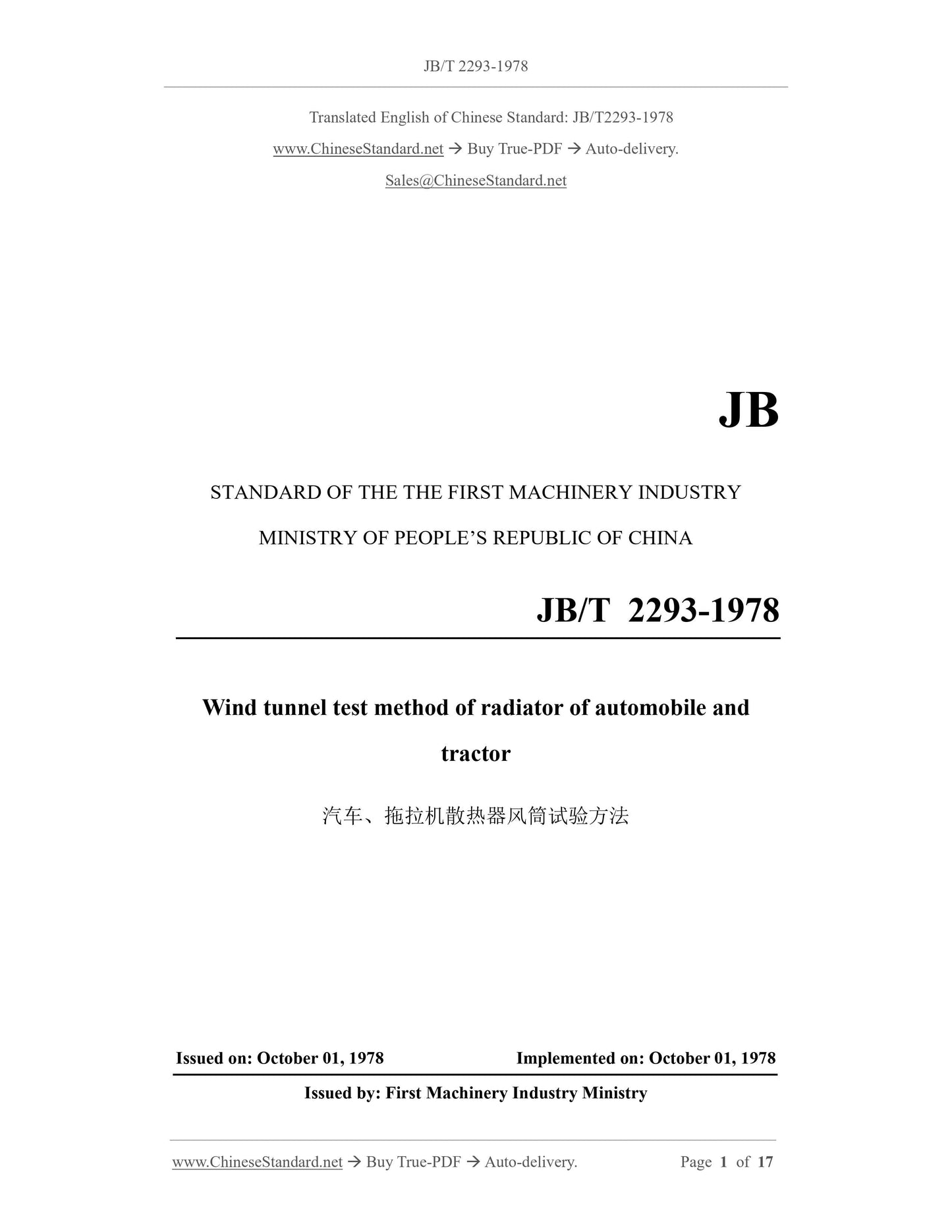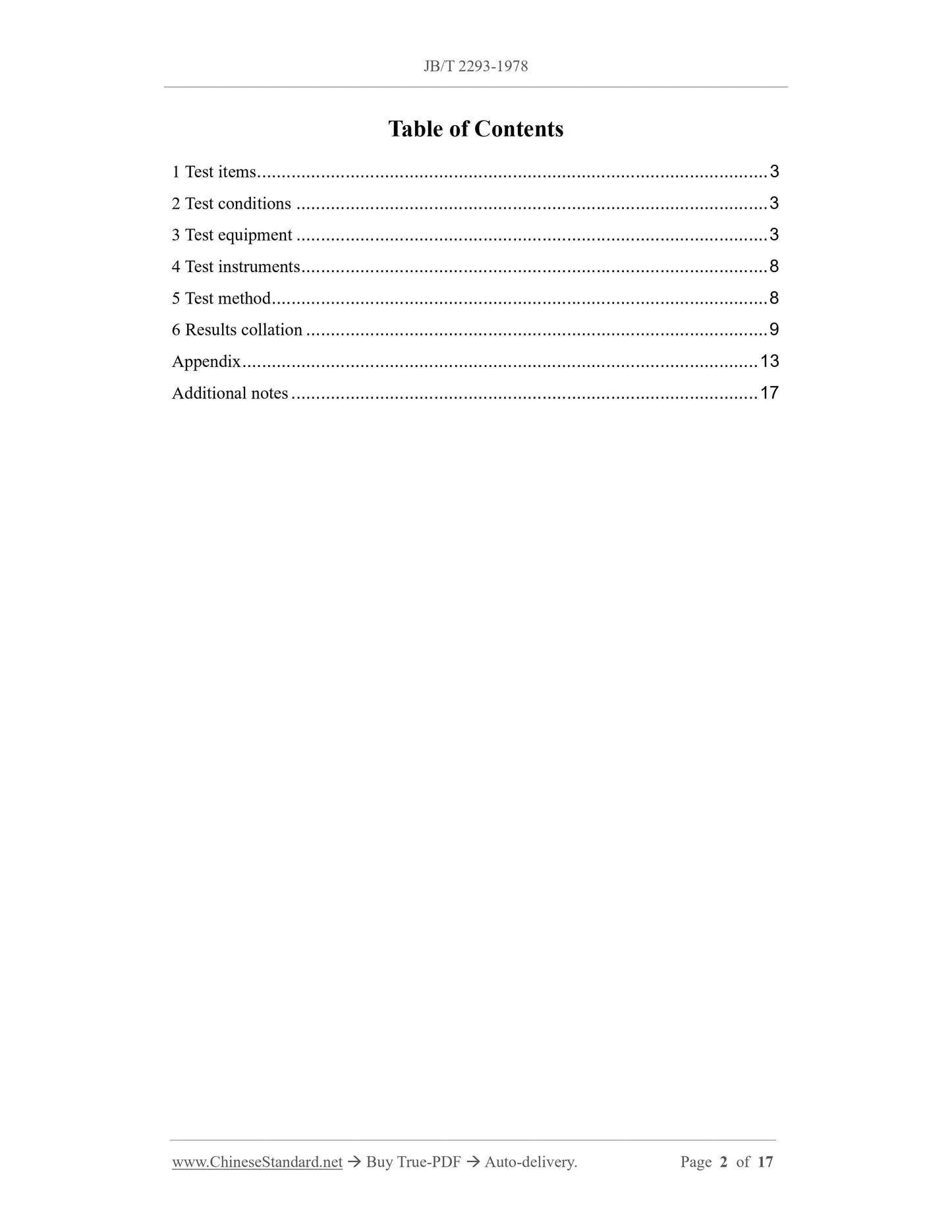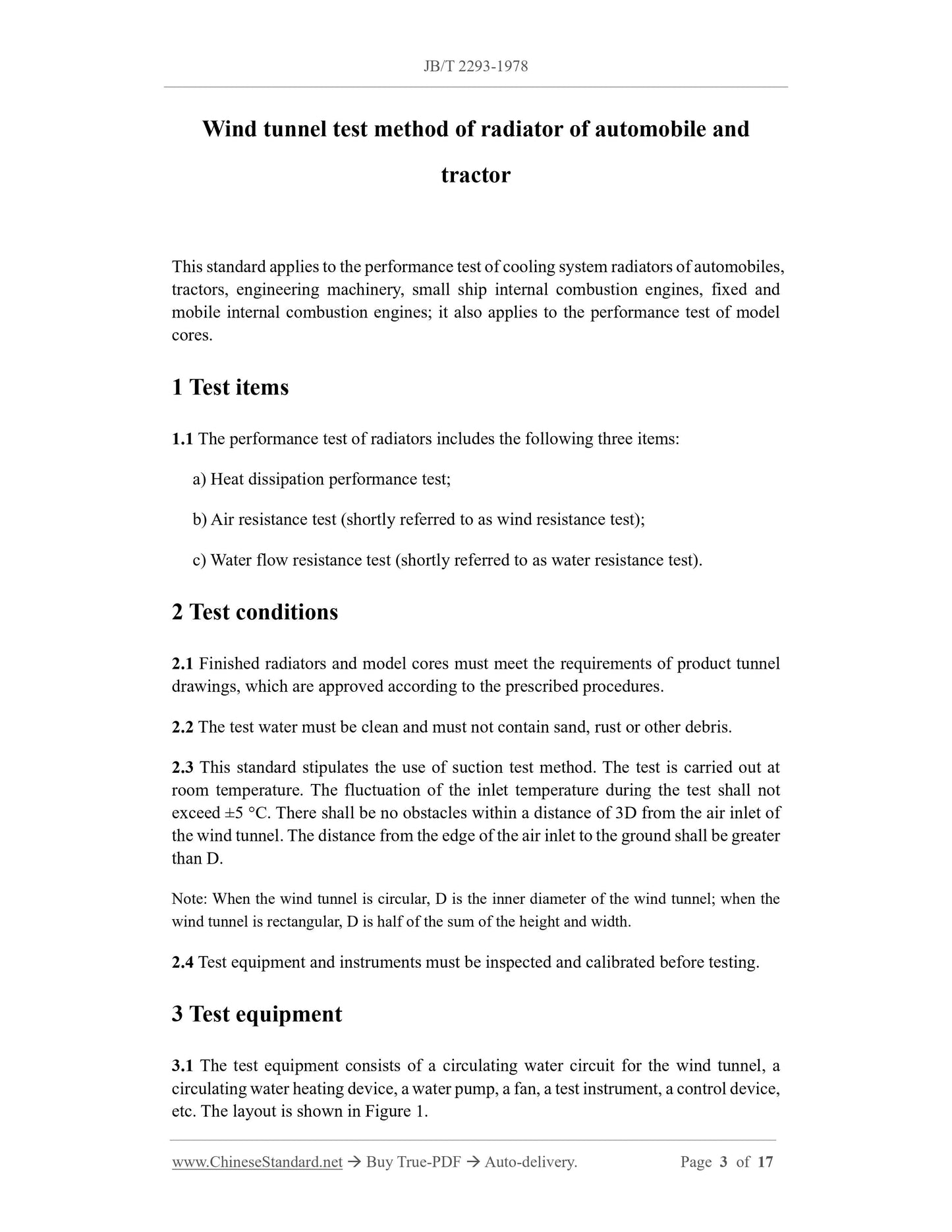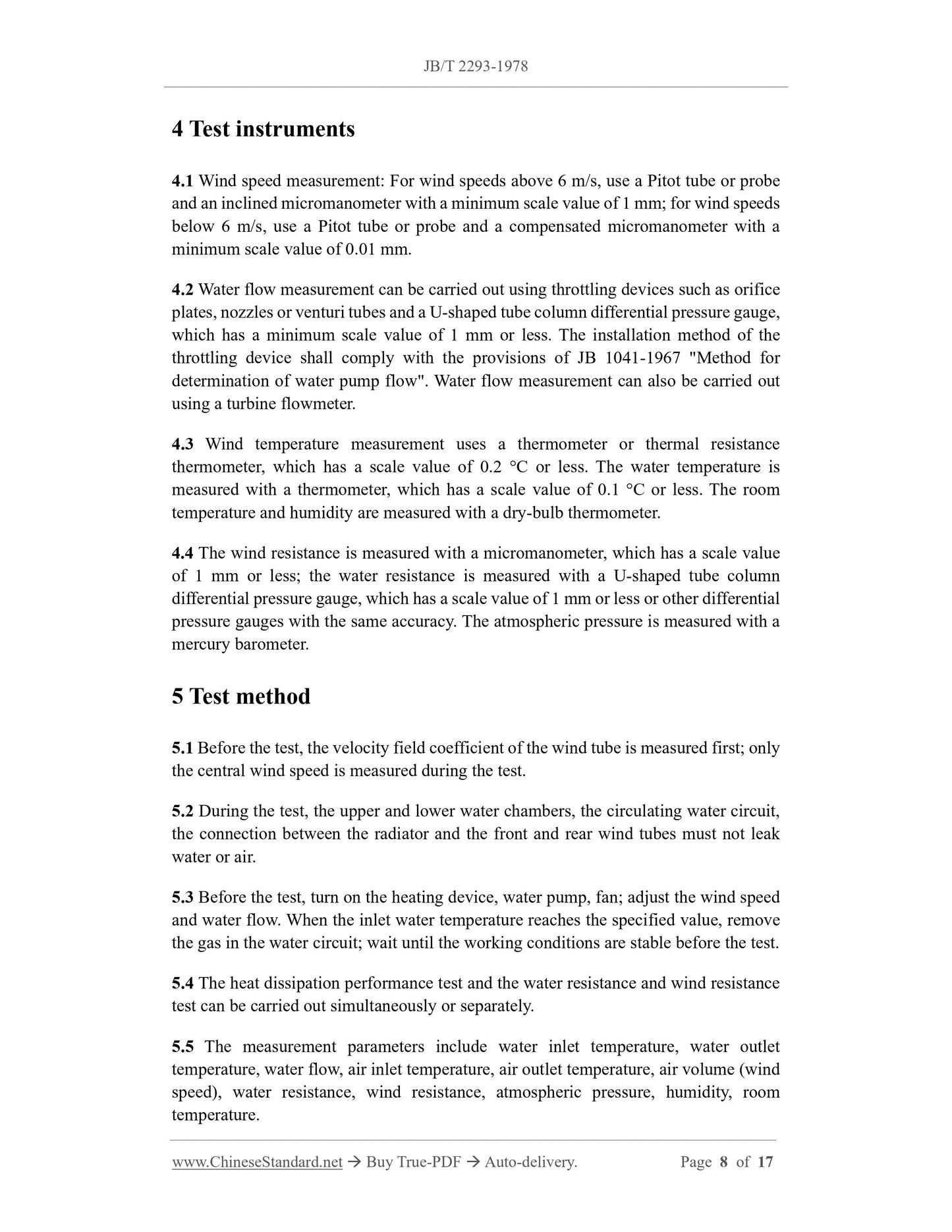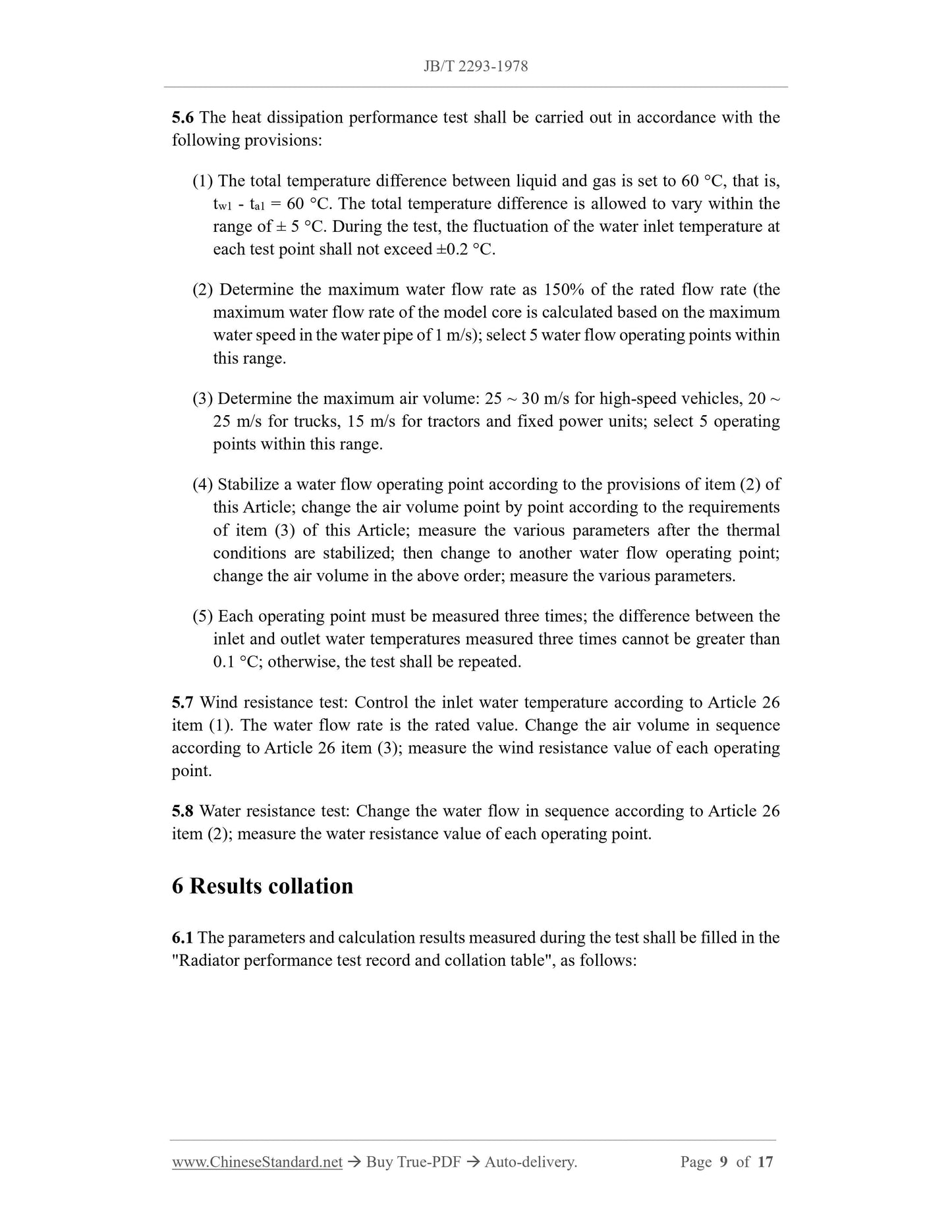1
/
of
5
www.ChineseStandard.us -- Field Test Asia Pte. Ltd.
JB 2293-1978 English PDF
JB 2293-1978 English PDF
Regular price
$195.00
Regular price
Sale price
$195.00
Unit price
/
per
Shipping calculated at checkout.
Couldn't load pickup availability
JB 2293-1978: Wind tunnel test method of radiator of automobile and tractor
Delivery: 9 seconds. Download (and Email) true-PDF + Invoice.Get Quotation: Click JB 2293-1978 (Self-service in 1-minute)
Newer / historical versions: JB 2293-1978
Preview True-PDF
Scope
1.1 The performance test of radiators includes the following three items:a) Heat dissipation performance test;
b) Air resistance test (shortly referred to as wind resistance test);
c) Water flow resistance test (shortly referred to as water resistance test).
Basic Data
| Standard ID | JB 2293-1978 (JB2293-1978) |
| Description (Translated English) | Wind tunnel test method of radiator of automobile and tractor |
| Sector / Industry | Mechanical and Machinery Industry Standard |
Share
